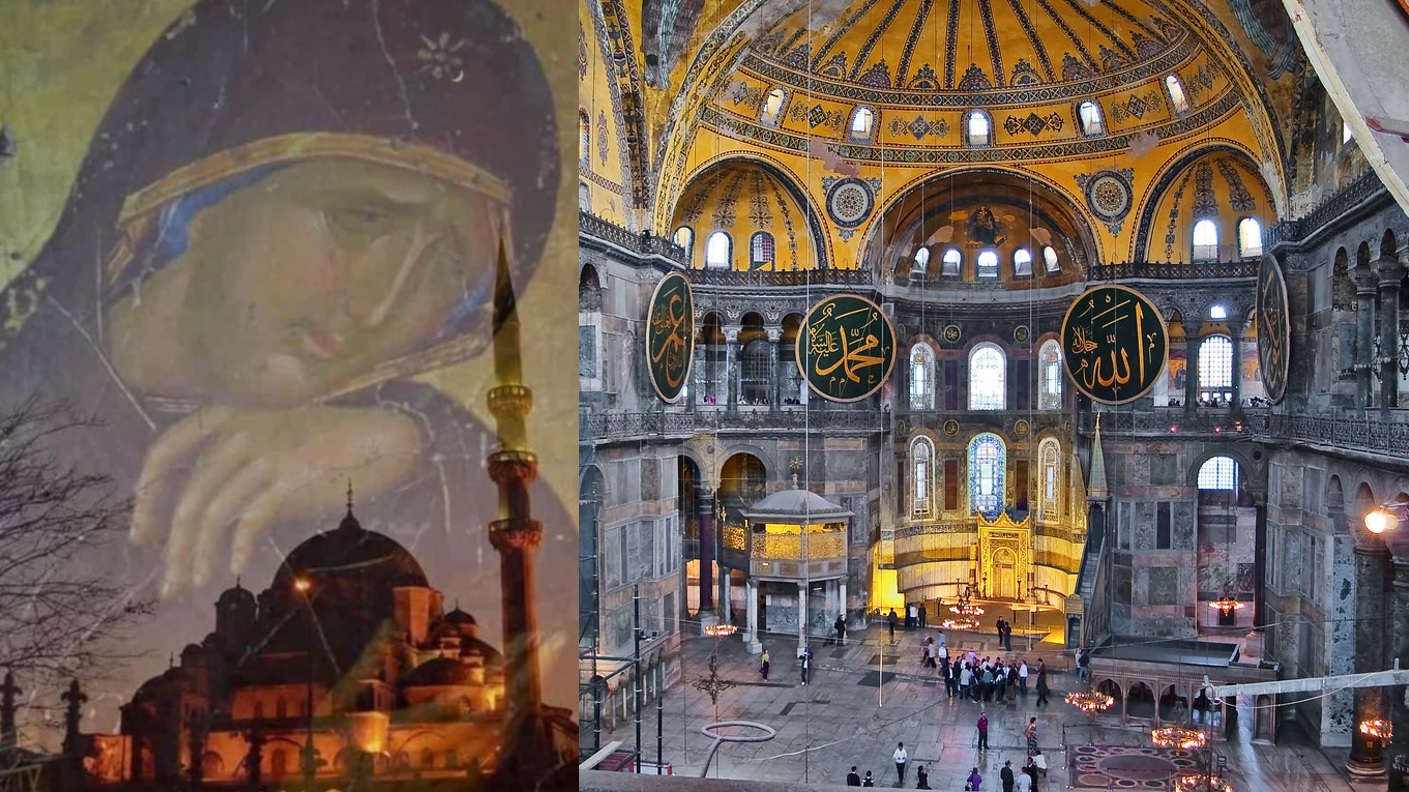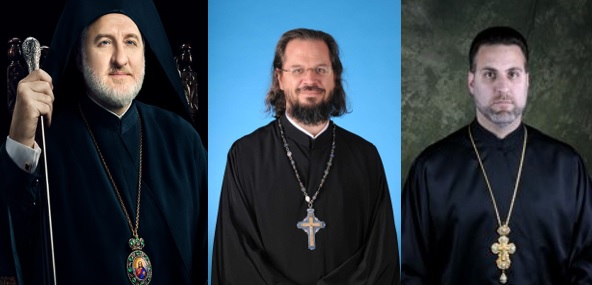Hagia Sophia (Ἁγία Σοφία) was built in 537 as the Patriarch Cathedral in the imperial capital of Constantinople (now renamed Istanbul). Hagia Sophia is dedicated to the Holy Wisdom , the second person of the Holy Trinity. It served as the largest Christian church of the Byzantine Empire. In 1204 to 1261, it became a Roman Catholic cathedral. In 1453, after Constantinople fell to the Ottoman Empire, it was converted into a Muslim mosque. In 1935, the secular Turkish Republic established it as a museum. In an unprecedented attack on religious freedom, in 2020, the Turkish government converted it back to a mosque.
Hagia Sophia (Ἁγία Σοφία) was the vision of Justinian I and was then the world’s largest interior space and among the first to employ a fully pendentive dome and was the most famous example of Byzantine architecture and largely changed the history of architecture”. As the Episcopal See of the Ecumenical Patriarch of Constantinople, it was the world’s largest Cathedral for nearly a thousand years, until Seville Cathedral was completed in 1520.
After the violent take over of this Christian Cathedral, many items were removed, holy relics were destroyed and the world class mosaics depicting our Lord and Savior Jesus Christ, his mother, the blessed Panaghia and other Saints or Angels were either destroyed or plastered over. The Byzantine architecture of the Hagia Sophia served as inspiration for many other religious buildings and even served as the inspiration of the soon to be completed St Nicholas Shrine at Ground Zero in New York City. Hagia Sophia has repeatedly been one the most visited tourist attractions in Turkey, and is a UNESCO World Heritage Site.
Listen to this special Stewardship Calling Ancient Faith Radio internet radio live call-in program from Thursday, August 13, 2020 here: HAGIA SOPHIA PROGRAM
Archbishop Elpidophoros – Fr. Alexander Rentel – Fr. Thomas Zain
Click on the link below for: 1. Complete contact information on all politicians and media outlets; 2. petitions you can sign; 3. Hagia Sophia background information and history; 4. interesting articles, videos and podcasts explaining the Hagia Sophia issues; 5. Official Joint Statements about Hagia Sophia; 6. a sample letter you can use, or edit, and send; 7. Hagia Sophia talking points you can use when speaking about Hagia Sophia:
Hagia Sophia Protest Letter – WORD Version (for you to download and use, or edit, and send to all politicians and media outlets):

